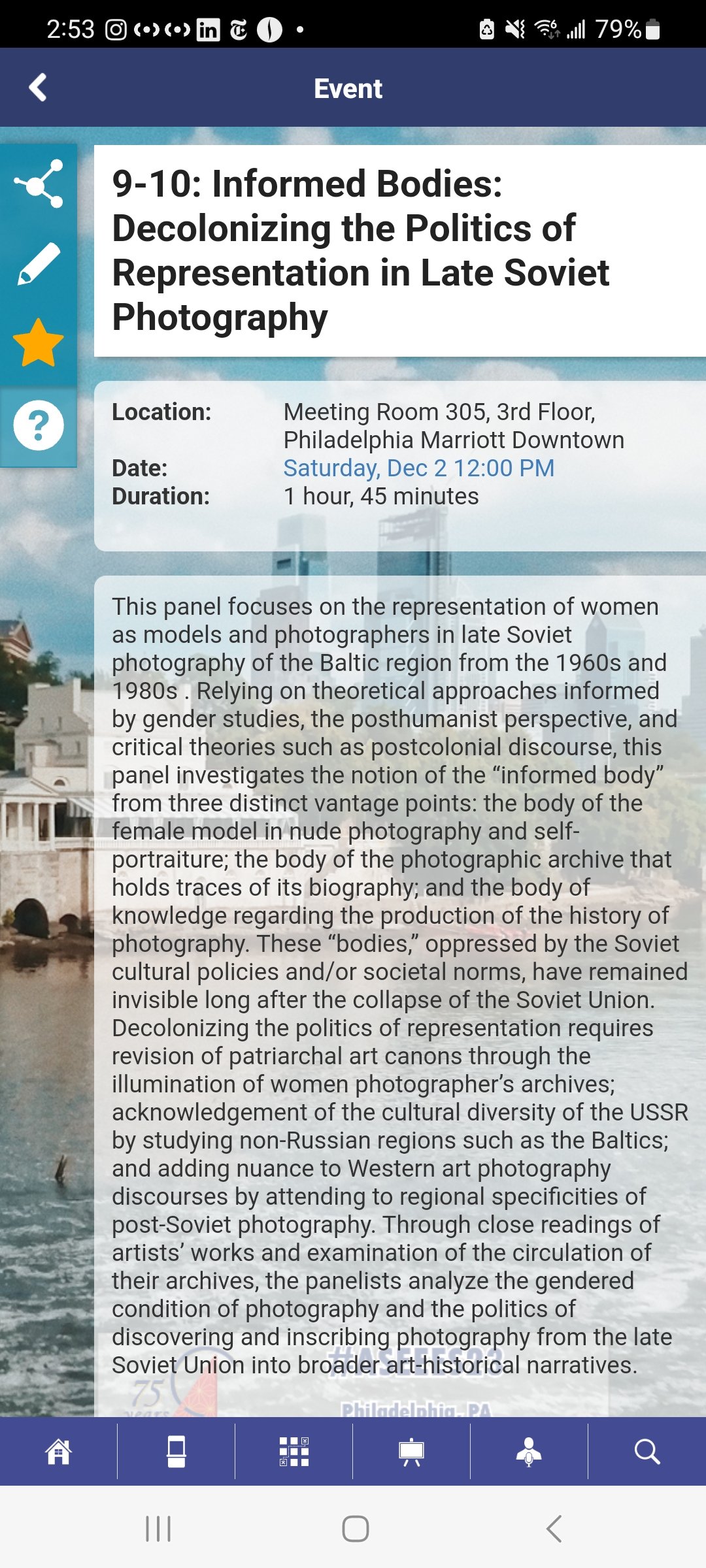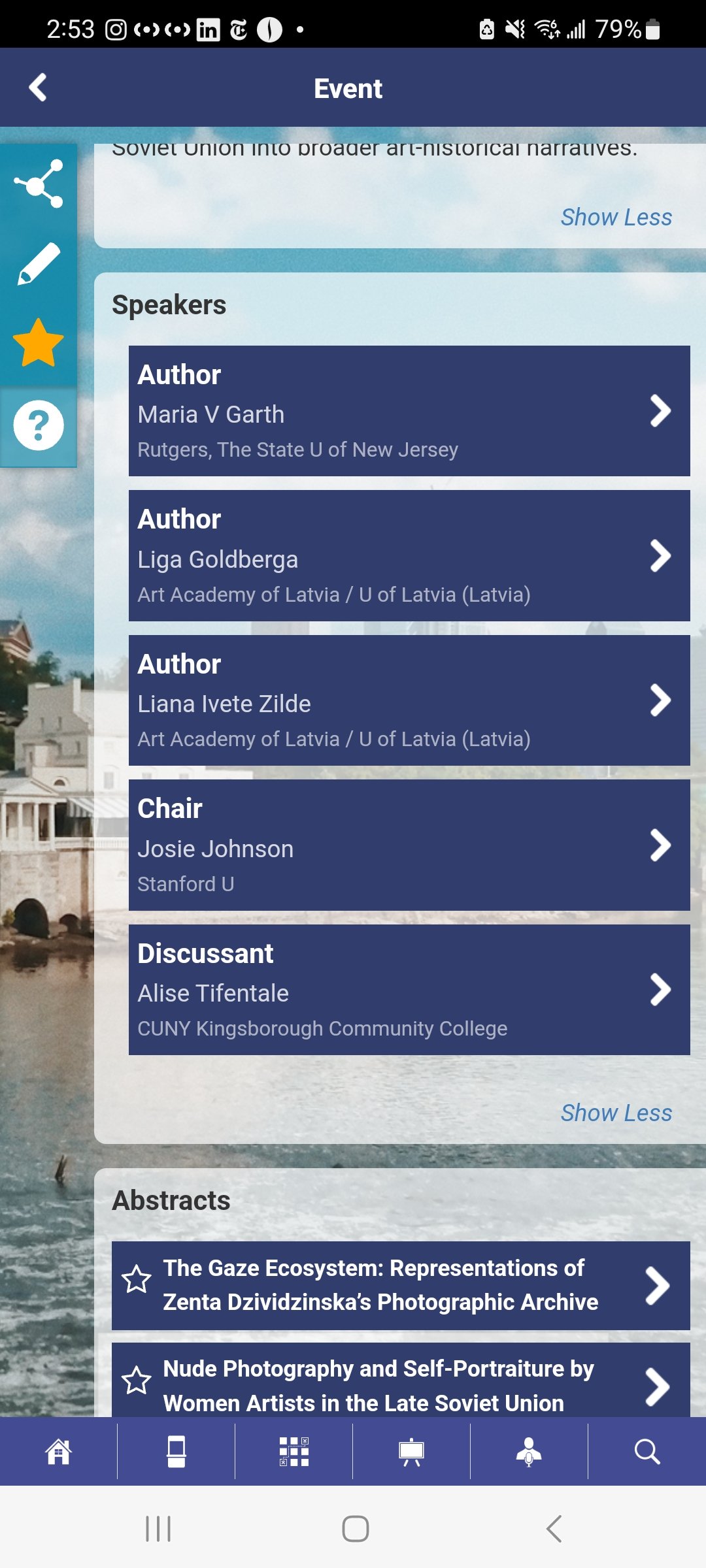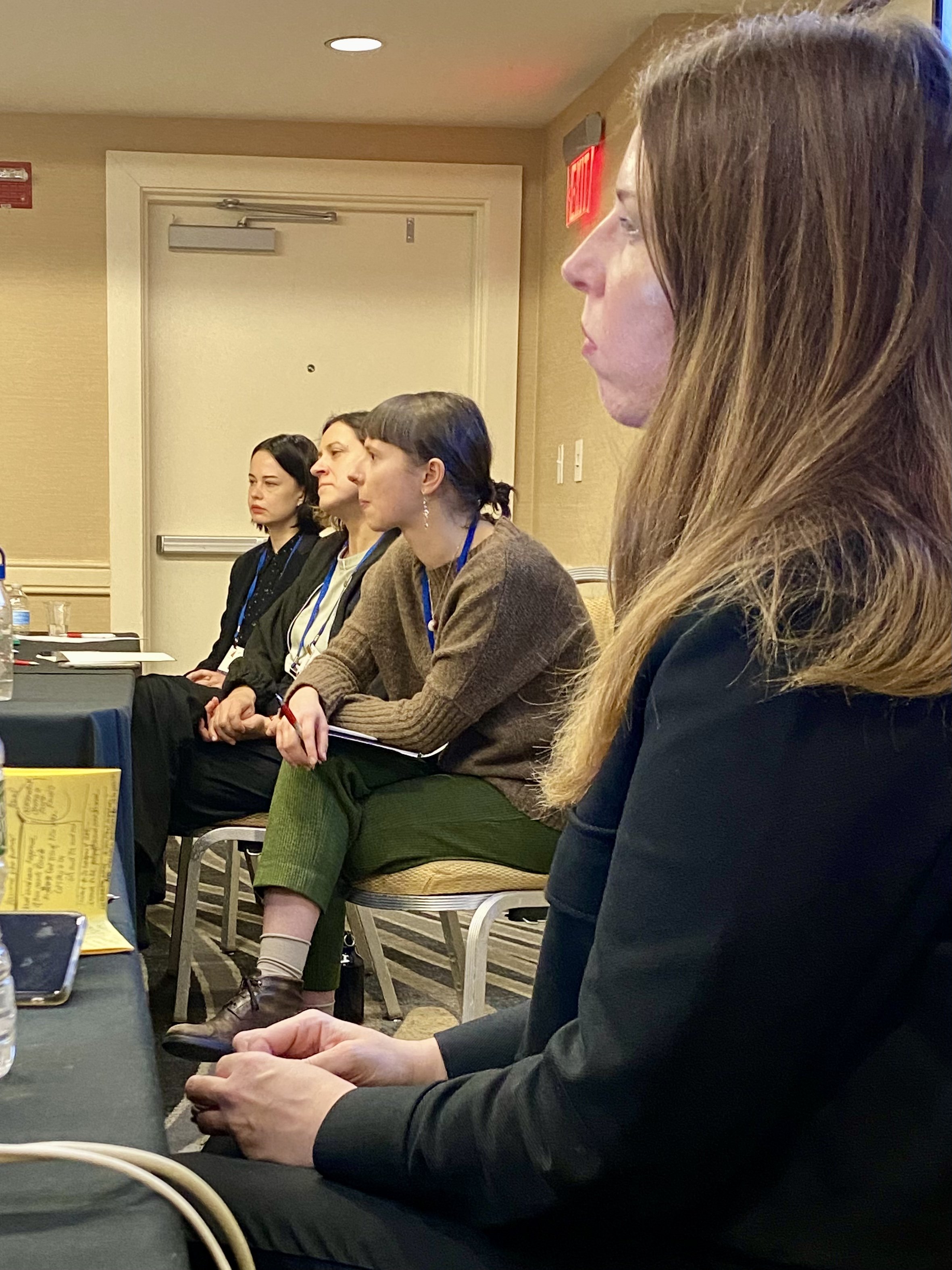The legacy of Zenta Dzividzinska at the ASEEES annual conference in Philadelphia
The legacy of the artist and photographer Zenta Dzividzinska was discussed at the ASEEES (Association for Slavic, East European, and Eurasian Studies) conference in Philadelphia, PA, on Saturday, December 2, 2023.
The panel, "Informed Bodies: Decolonizing the Politics of Representation in Late Soviet Photography," was part of the ASEEES annual conference in Philadelphia with Josie Johnson (Stanford University) as the chair, papers by Līga Goldberga (Art Academy of Latvia/University of Latvia), Liāna Ivete Žilde (Art Academy of Latvia/University of Latvia), and Maria Garth (Rutgers University), and Alise Tifentale (City University of New York, Kingsborough) as the discussant.
Panel participants at the ASEEES in Philadelphia. From left: Josie Johnson, Alise Tifentale, Maria Garth, Liāna Ivete Žilde, and Līga Goldberga. Photo: Alise Tifentale.
Brief description of the panel
“This panel focuses on the representation of women as models and photographers in late Soviet photography of the Baltic region from the 1960s and 1980s . Relying on theoretical approaches informed by gender studies, the posthumanist perspective, and critical theories such as postcolonial discourse, this panel investigates the notion of the “informed body” from three distinct vantage points: the body of the female model in nude photography and self-portraiture; the body of the photographic archive that holds traces of its biography; and the body of knowledge regarding the production of the history of photography. These “bodies,” oppressed by the Soviet cultural policies and/or societal norms, have remained invisible long after the collapse of the Soviet Union. Decolonizing the politics of representation requires revision of patriarchal art canons through the illumination of women photographer’s archives; acknowledgement of the cultural diversity of the USSR by studying non-Russian regions such as the Baltics; and adding nuance to Western art photography discourses by attending to regional specificities of post-Soviet photography. Through close readings of artists’ works and examination of the circulation of their archives, the panelists analyze the gendered condition of photography and the politics of discovering and inscribing photography from the late Soviet Union into broader art-historical narratives.”
Abstracts
Līga Goldberga. Photo: Alise Tifentale.
Detail of Līga’s presentation.
Līga Goldberga (Art Academy of Latvia/University of Latvia), “The Gaze Ecosystem: Representations of Zenta Dzividzinska’s Photographic Archive”
This paper draws upon posthumanist theories to discuss how various modes of the gaze—autobiographical, artistic, curatorial, familial, institutional, and period-specific—affect the visibility and trajectories of archival bodies and their inclusion in art history. The gaze ecosystem serves as a conceptual framework for the case study of Latvian photographer Zenta Dzividzinska’s (1944–2011) archive that holds little-studied photo negatives from the 1960s and 1970s and its historical and contemporary circulation. This approach allows analyzing not only representations of female bodies in the male-dominated Soviet photo club culture but also a gaze that evaluates the bodies of women’s archives and their status in art in different time periods and political and social contexts.
Liāna Ivete Žilde. Photo: Alise Tifentale.
Detail of Liāna’s presentation.
Liāna Ivete Žilde (Art Academy of Latvia/University of Latvia), “Writing the Body: Reassessing the History of Latvian Photography”
The last attempt to provide a coherent narrative of the history of photography in Latvia–survey book Photo Art in Latvia. History and Today (1985)–strongly embodies Soviet ideology in terms of history writing and photography theory, and completely lacks female representation. This paper focuses on the challenges involved in constructing/deconstructing a contemporary “body of knowledge” on photography in Latvia, while taking into account the experiences of Estonia, Lithuania, and other regional neighbors. A reflexive archeology of knowledge must take place that acknowledges subjectivity and the ways in which power dynamics and social, political, and cultural contexts shape representation.
Maria Garth. Photo: Alise Tifentale.
Detail of Maria’s presentation featuring a photograph by Zenta Dzividzinska.
Maria Garth (Rutgers University), “Nude Photography and Self-Portraiture by Women Artists in the Late Soviet Union”
This paper investigates how emerging women photographers navigated the intricacies of photography clubs and professional unions during the final decades of the Soviet Union. Working in collectives in Riga and Vilnius, photographers such as Zenta Dzividzinska (1944-2011), Māra Brašmane (b. 1944), and Violeta Bubelytė (b.1956) entered the profession through formal and informal means while exploring the conceptual underpinnings of self-portraiture, representation, and the nude body in photography. Their experiences show that re-examining this period through the lens of gender offers a new perspective on the production and circulation of Soviet nonconformist photography and proto-feminist art behind the Iron Curtain.
Discussion following the presentations. Photo: Josie Johnson.
Panel participants at the ASEEES in Philadelphia. From left: Alise Tifentale, Maria Garth, Līga Goldberga, and Liāna Ivete Žilde. Photo: Josie Johnson.












